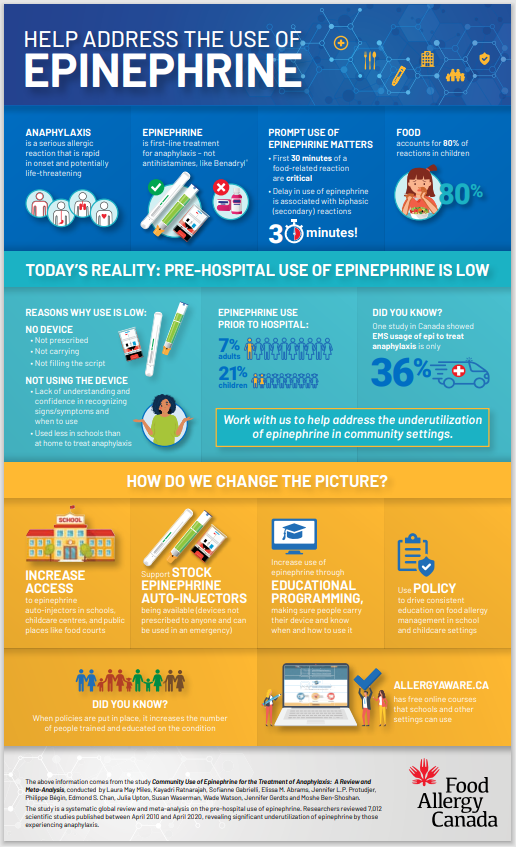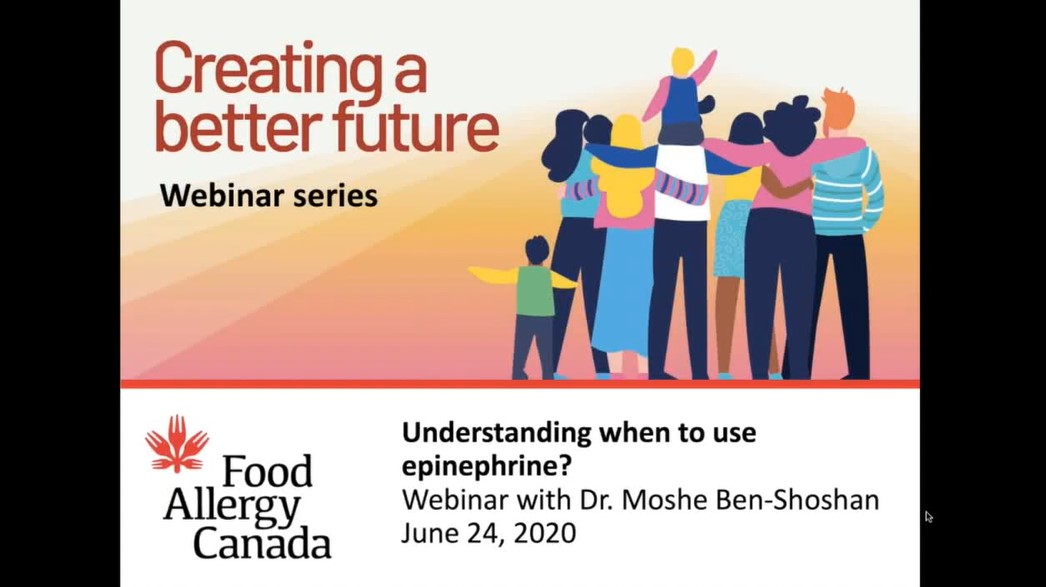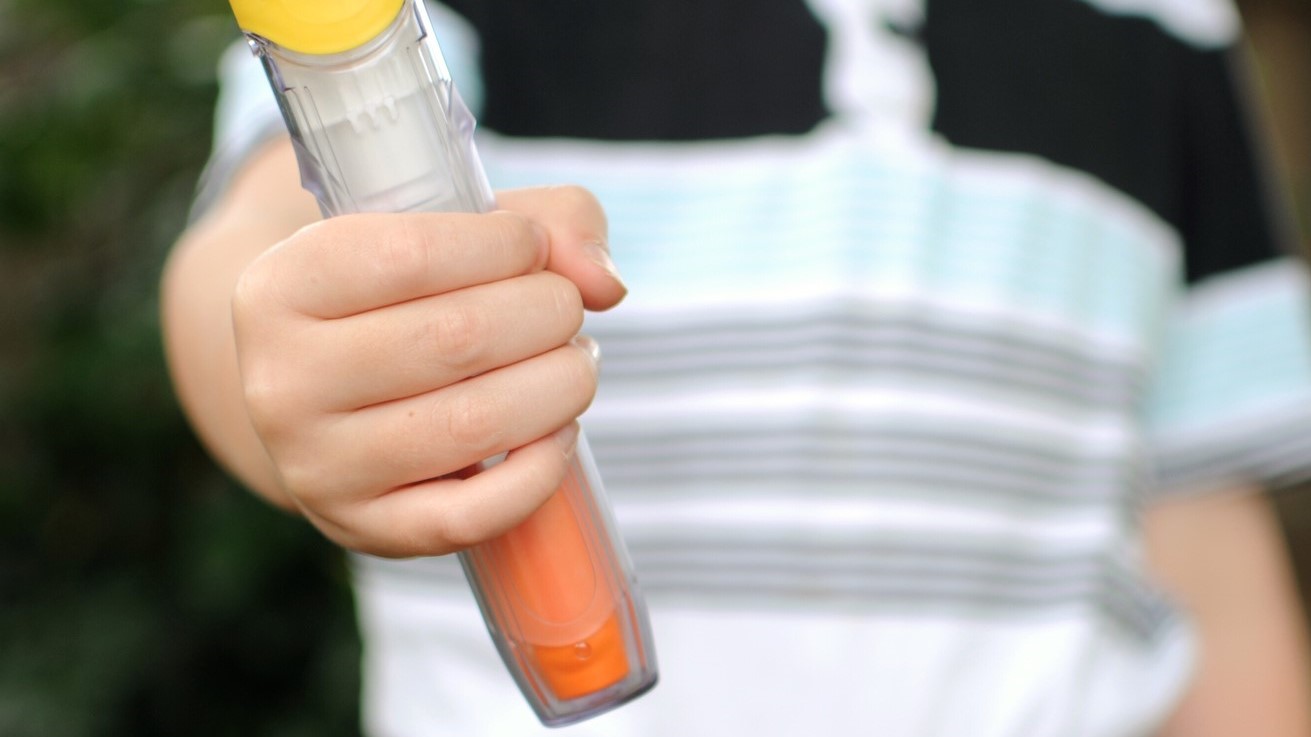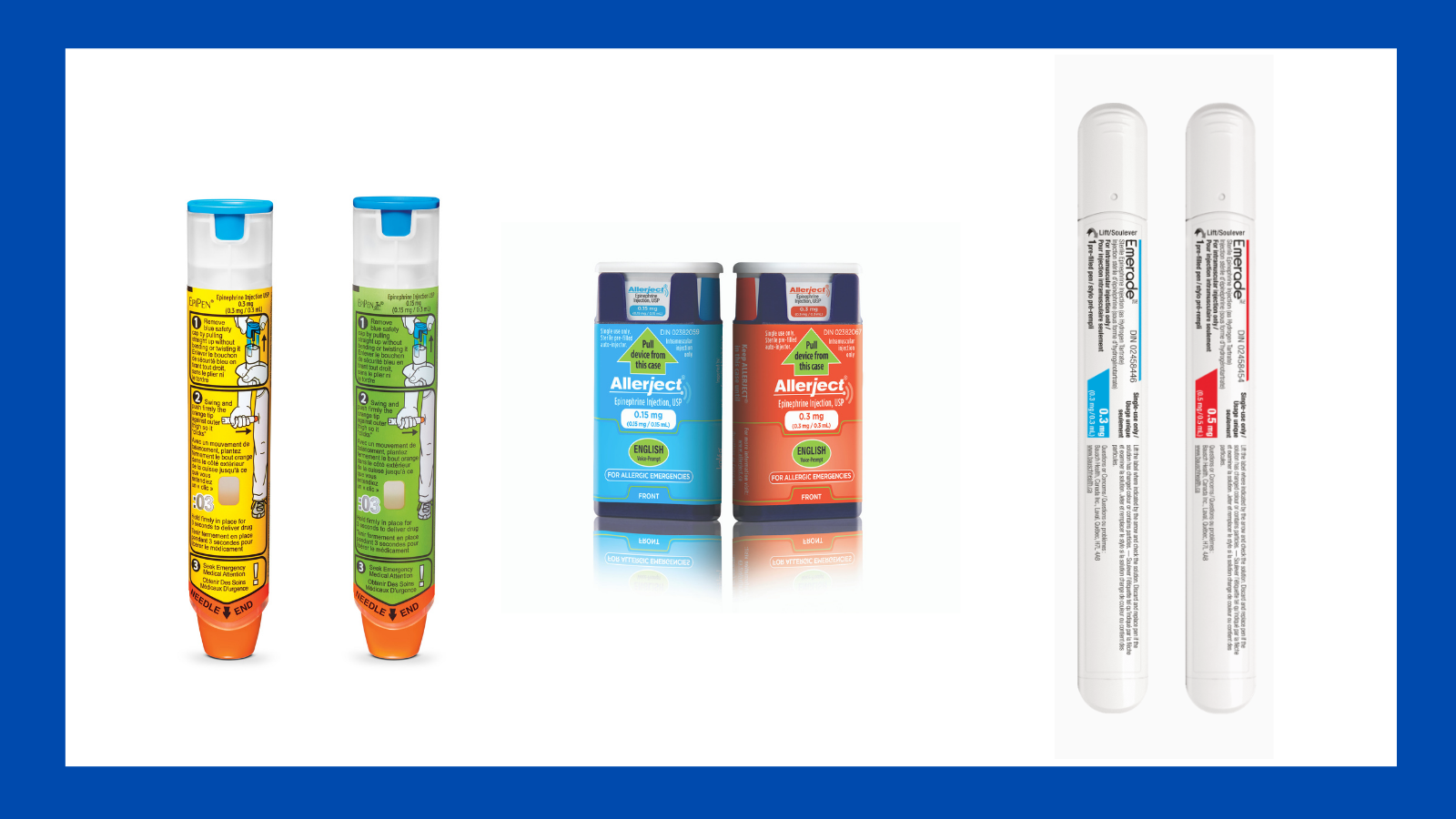Find out what’s new in food allergy research, including a study co-authored by our Executive Director and members of our Healthcare Advisory Board. The insights from this study will help us advocate with key stakeholders on increasing the use of epinephrine to treat anaphylaxis. Plus, check out this month’s mythbuster on whether it’s okay to wait and see before administering epinephrine when having an allergic reaction.
Research and advocacy: Study notes that epinephrine use is low when treating anaphylaxis before going to the hospital – why is this and what can be done?
Epinephrine is recognized as first-line treatment for anaphylaxis, however it remains underutilized when treating reactions prior to going to the hospital. The reasons why it’s low and the actions needed for change are highlighted in our new infographic.
The insight highlighted in the infographic is based on a study co-authored by our Executive Director and members of our Healthcare Advisory Board. The study reports on the need for improvement in the use of epinephrine before going to the hospital (also referred to as “in community settings”) and what can be done to change the current picture.
We’ll be sharing this insight with the Ministries of Education, school communities, governments, and other stakeholders as a part of our discussions around:
- Policy for increased access to epinephrine
- Support of stock epinephrine auto-injectors (devices not prescribed to anyone and can be used in an emergency)
- Increased educational programming on anaphylaxis to reinforce when and how to treat it
Improvements in recognizing anaphylaxis and treating with epinephrine in community settings can lead to better outcomes, a goal shared by individuals with food allergy and healthcare professionals alike. You can:
- Check out the insights in our new infographic to understand more about the barriers to pre-hospital use of epinephrine and how to address them
- Ensure you know how to recognize anaphylaxis and when to use epinephrine:
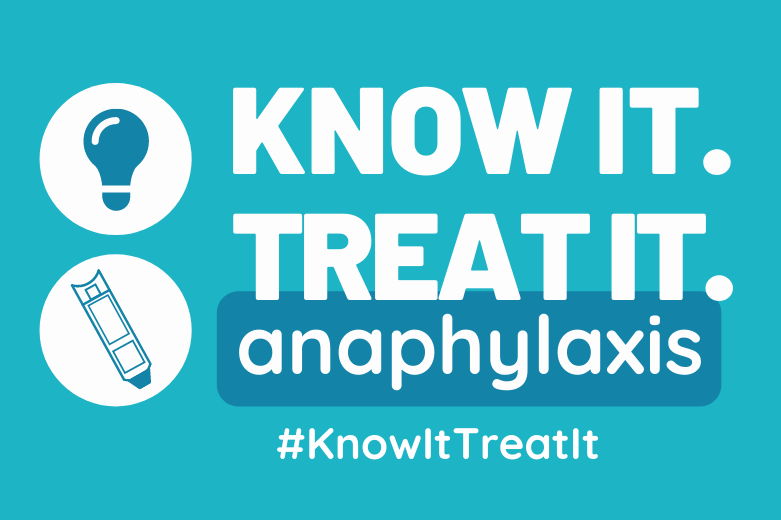 Watch our #KnowItTreatIt encore presentation series of past online events and webinar
Watch our #KnowItTreatIt encore presentation series of past online events and webinar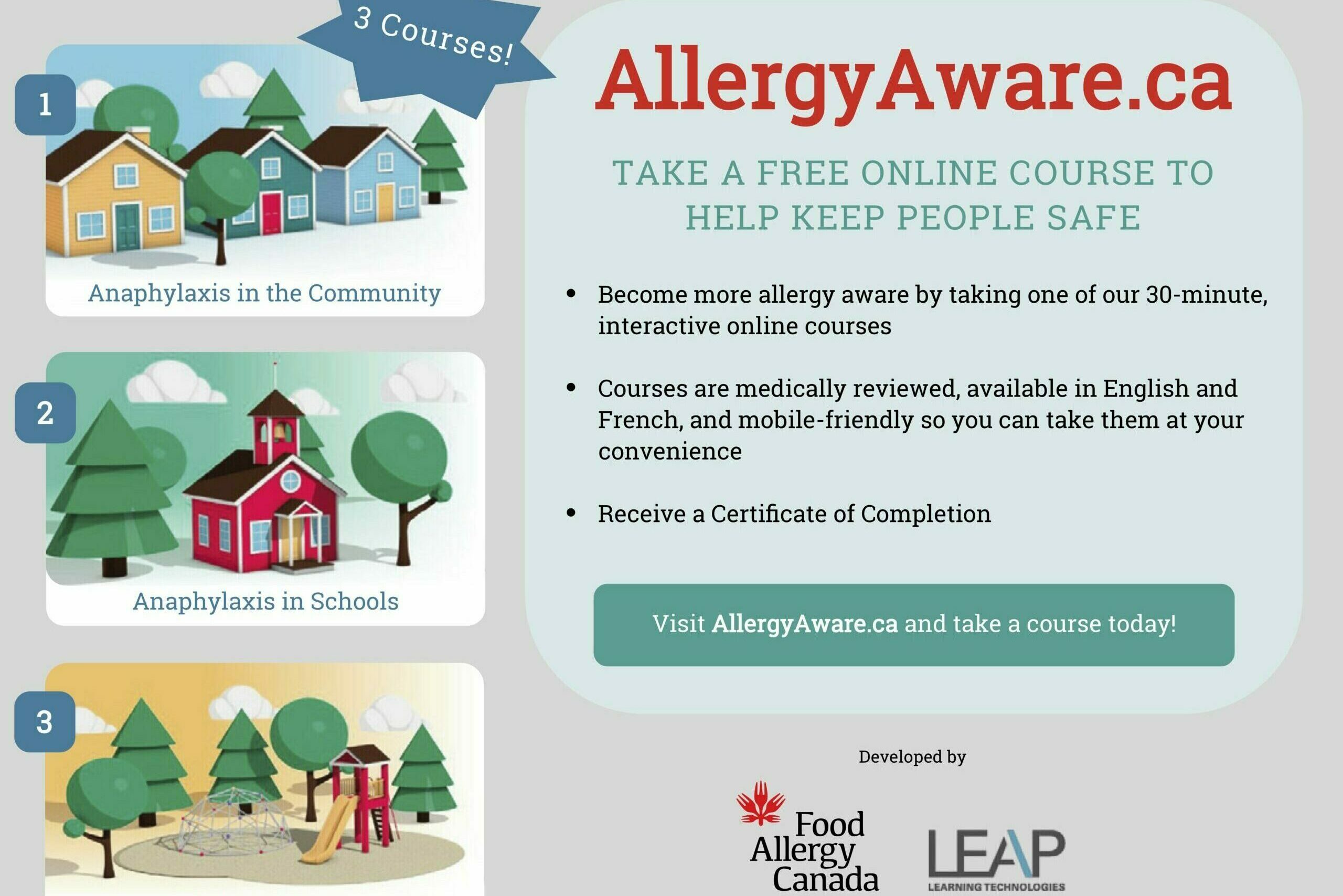 Take the free, 30-minute online course, Anaphylaxis in the Community, at AllergyAware.ca
Take the free, 30-minute online course, Anaphylaxis in the Community, at AllergyAware.caMythbuster: Is it okay to wait and see before administering epinephrine when having symptoms of anaphylaxis?
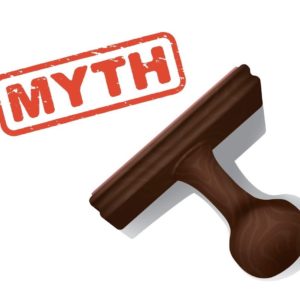
FACT: Symptoms of anaphylaxis can occur suddenly and progress quickly. The first 30 minutes are critical, so it’s important to always take a possible reaction seriously and act promptly.
Give epinephrine at the start of a known or suspected anaphylactic reaction. Treating promptly also helps to reduce the risk of a secondary (biphasic) reaction. While fatalities are rare, anaphylaxis must always be considered a medical emergency requiring immediate treatment.
Bottom line: If anaphylaxis is suspected, don’t wait and see whether symptoms improve. It’s better to use the epinephrine auto-injector, it’s safe and easy to use.
Learn more:
Help us educate your communities and share this mythbuster with them! Find more mythbusters at foodallergycanada.ca/mythbusters.
Tags: advocacy, Advocacy in action, mythbuster, Research

